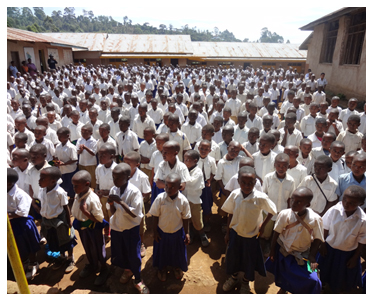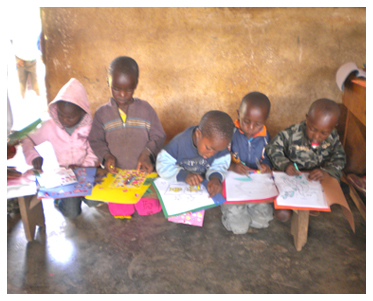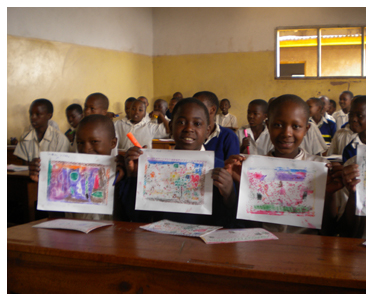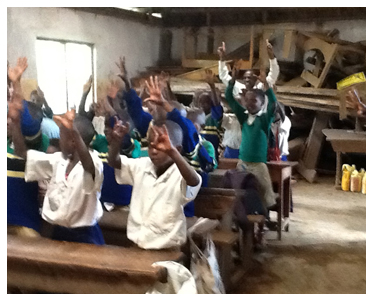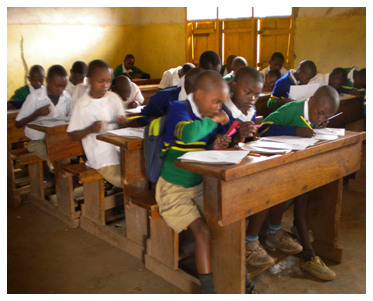
 |
|
The school sits at 6,000 ft. on the slopes of Mt. Kilimanjaro in an exceptionally beautiful & tranquil spotsurrounded by verdant lush countryside. It is made up of two schools Mbahe & Ngaroni and currently there are 651 students enrolled in the 2 schools ranging in age from 5 / 6 to approximately 14. Arriving there is a real adventure.Going to school in Kilimanjaro is not quite as easy as in most of the developed world. There are no buses, no cars & no car pools. The only way to school is on foot and many children travel long distances every day to be in class. The interior of the school is the antithesis of the beautiful surroundings. The school is a series of one story buildings laid out around a couple of rough courtyards. There is also a separate building more like an open hut where lunch is prepared every day for the children. Every child brings a bowl with them and lunch consists of maize with some beans. As you approach the school you quickly see children‘s faces hanging out of every window and shouts of “JAMBO” (WELCOME) go up. Many of the building are quite frankly dilapidated and in desperate need of repair. There is nothing at all fancy in these school rooms, just plain wooden desks and benches with 3 or 4 kids sharing each bench. There is a dirt floor, which the children help to clean at the end of each day, and a blackboard which stretches from one end of the room to the other. Stacks of old wood litter the back of some of the school rooms. There are some windows but no glass. It can be very dark on rainy days when the shutters must be closed. There is no electricity and therefore no lights.
The school takes children from 4 – 5 years up to 13 – 14 years. Currently there are 651 children enrolled in the school. Once the children reach 13 – 14 years they take an extremely competitive exam to see who will qualify to go onto secondary school. At present some 38 – 40% of the children pass this exam, which compares extremely well with other state run schools. Passing the exam, however, is the first hurdle, paying is next as secondary school costs $1,000 a year which represents a fortune for the average family, and, which , greatly exceeds their average annual salary. There are 2 schools based in Southern California which are currently twinned with Mbahe primary School:
Many improvements have been made to date, the most important being
|
|



